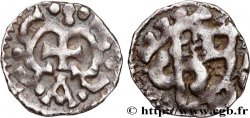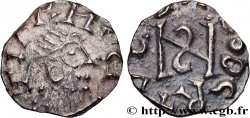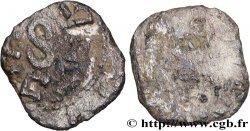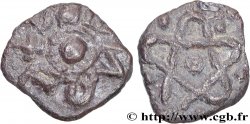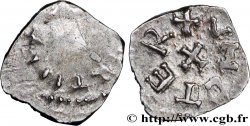bmv_881614 - TOURS (TVRONVS CIVITAS) Denier
800.00 €
Cantidad
Añadir a su cesta

Tipo : Denier
Fecha: s.m.
Nombre del taller / ciudad: Marmoutier à Tours (37)
Metal: plata
Diámetro: 16 mm
Eje de acuñación: 12 h.
Peso: 1,26 g.
Grado de rareza: R3
Comentarios sobre el estado de conservación:
Ce denier et frappé sur un flan large et irrégulier. Quelques faiblesses de frappe. Patine grise. Léger décentrage au revers
Pedigrí:
Monnaie provenant de la collection Philippe Schiesser publiée dans le RTSENA 7, n° 24 bis, p. 101
Anverso
Titulatura del anverso: + MOI SCI / HARTN.
Descripción del anverso: Buste diadémé à gauche.
Traducción del anverso: (Saint-Martin).
Reverso
Titulatura del reverso: + NAVDE[GIS]ELO M.
Descripción del reverso: Monogramme avec une boucle (SEMNOR).
Traducción del reverso: (Monétaire Naudegiselo).
Comentario
Le monogramme dit à la boucle n’a jusqu’à présent pas été déchiffré. On pourrait y voir les lettres composant le monogramme de Marmoutier en latin (sur le plan de l’étymologie Mar pour grand/majeur - voir les trois premières lettres du prénom Martin - et moutier pour monasterium). Saint-Martin se retira dans un ermitage à Marmoutier (actuellement Tours, au nord de la Loire). Un monastère y fut créé sur des ruines antiques. Il est bien attesté chez Grégoire de Tours (539-594) qui parle de “majus monasterium” (grand monastère). Ce monastère était autrefois en périphérie de Tours, d’où l’absence de référence à Tours (TVRONVS), mais la référence à Saint-Martin et au “grand monastère” par le biais du monogramme du revers. Le MOI en début de légende du droit pourrait signifier Monastère de Saint-Martin sauf s’il s’agit d’une déformation de RACIO se rencontrant sur certaines monnaies de Childéric II (673-675) frappées à Tours.
The so-called buckle monogram has not yet been deciphered. It could be seen as the letters composing the Marmoutier monogram in Latin (etymologically, Mar for great/major - see the first three letters of the first name Martin - and moutier for monasterium). Saint Martin retired to a hermitage in Marmoutier (present-day Tours, north of the Loire). A monastery was created there on ancient ruins. It is well attested by Gregory of Tours (539-594) who speaks of a “majus monasterium” (great monastery). This monastery was formerly on the outskirts of Tours, hence the absence of reference to Tours (TVRONVS), but the reference to Saint Martin and the “great monastery” through the monogram on the reverse. The MOI at the beginning of the legend of the right could mean Monastery of Saint-Martin unless it is a deformation of RACIO found on certain coins of Childeric II (673-675) struck in Tours
The so-called buckle monogram has not yet been deciphered. It could be seen as the letters composing the Marmoutier monogram in Latin (etymologically, Mar for great/major - see the first three letters of the first name Martin - and moutier for monasterium). Saint Martin retired to a hermitage in Marmoutier (present-day Tours, north of the Loire). A monastery was created there on ancient ruins. It is well attested by Gregory of Tours (539-594) who speaks of a “majus monasterium” (great monastery). This monastery was formerly on the outskirts of Tours, hence the absence of reference to Tours (TVRONVS), but the reference to Saint Martin and the “great monastery” through the monogram on the reverse. The MOI at the beginning of the legend of the right could mean Monastery of Saint-Martin unless it is a deformation of RACIO found on certain coins of Childeric II (673-675) struck in Tours







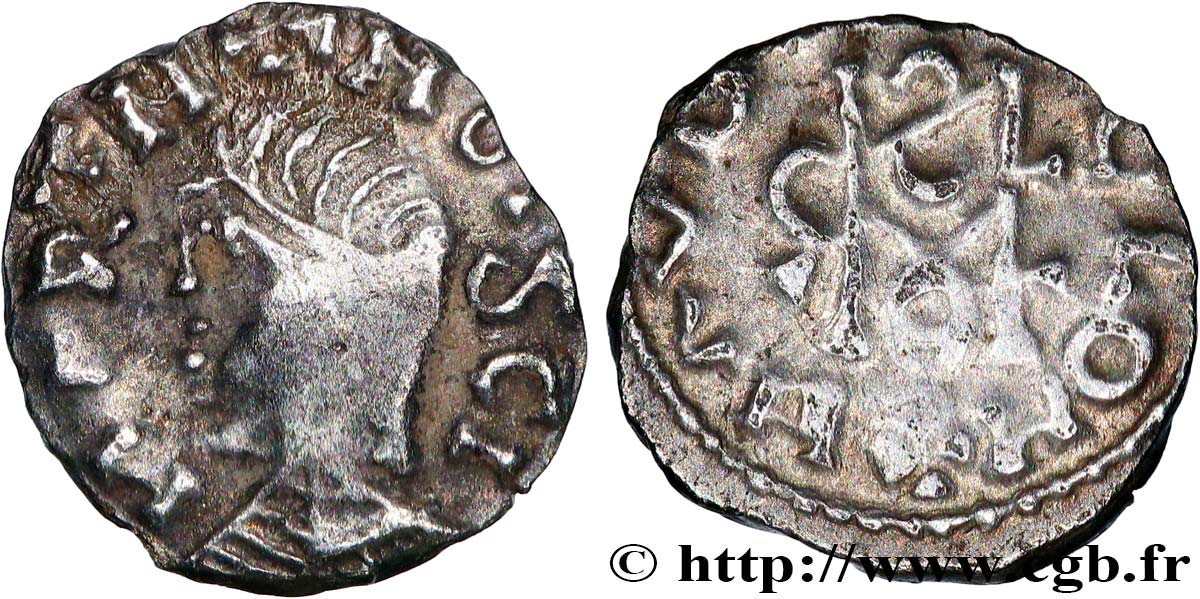
 Informar de un error
Informar de un error Imprimir la página
Imprimir la página Comparte mi selección
Comparte mi selección Haz una pregunta
Haz una pregunta Consignar / vender
Consignar / vender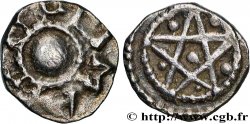
 Descriptivo
Descriptivo